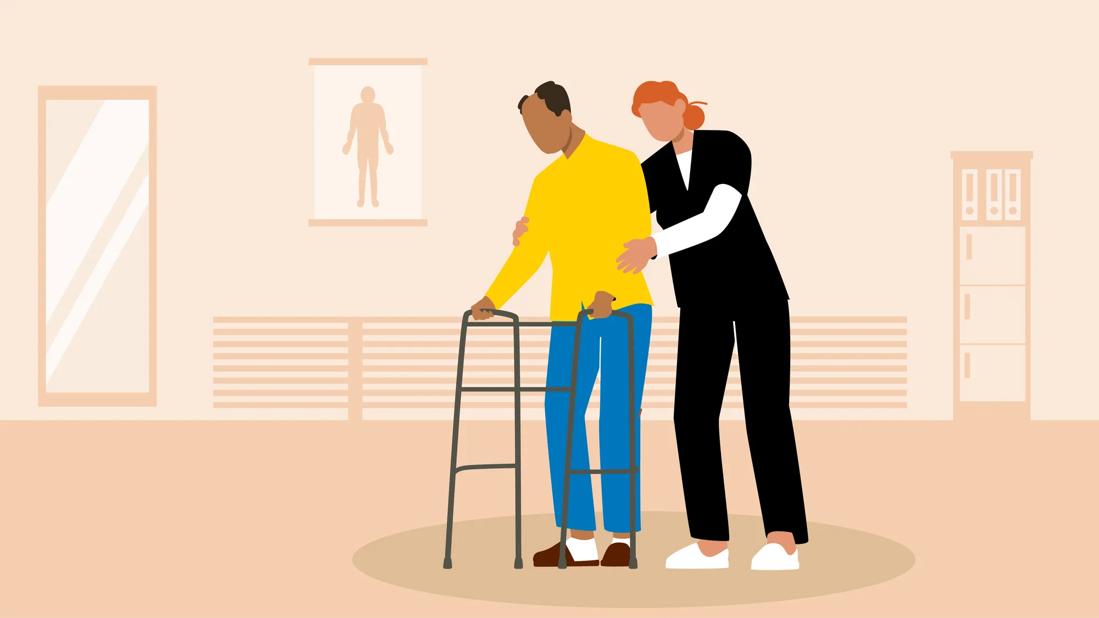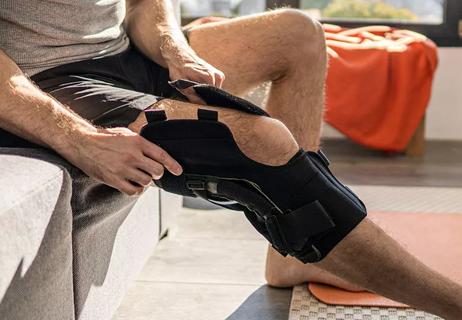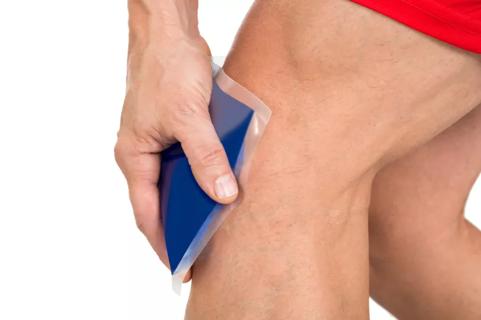Full recovery takes a year or more, but you’ll likely be walking and driving within a few weeks if you follow your provider’s recovery plan

If you’re considering knee replacement surgery, you’ve likely been dealing with knee pain for a while. And although you might be excited about the relief that a new knee can bring, it’s normal to wonder about the recovery.
Advertisement
Cleveland Clinic is a non-profit academic medical center. Advertising on our site helps support our mission. We do not endorse non-Cleveland Clinic products or services. Policy
Orthopaedic surgeon Preston Grieco, MD, explains what to expect after knee replacement surgery and how to recover as quickly as possible.
It would be great to have an exact timeline of how things will go after your knee replacement surgery. But there’s no way to know for sure because it depends on a lot of things.
“Your age and medical history are a few factors that determine your recovery time,” Dr. Grieco says. “How you care for yourself after the surgery also plays an important role.”
Here’s a general idea of what happens after knee replacement.
After your surgery is complete, your team will wheel you to a recovery area. When you wake up, you’ll have some pain and grogginess.
“The type of anesthesia you had will determine how you feel right after surgery,” says Dr. Grieco. “General anesthesia can take longer to wear off than spinal anesthesia with sedation. Either way, you’ll likely feel moderate pain in your knee, but your team can help keep it under control.”
Your care team will likely have you up and walking around quicker than you might expect.
“Most patients start physical therapy within four hours after surgery,” Dr. Grieco shares. “This is a critical time to get the new knee — and your whole body — moving.”
Advertisement
If that sounds overwhelming, try not to worry: You’ll have help getting around.
“You’ll use a walker and have someone with you to ensure you don’t fall,” he continues. “Your physical therapist will also help you gently bend and exercise your knee.”
You might even get to sleep in your own bed that night, but this varies from person to person.
“Most people can go home the same day as their knee replacement, but some need to stay overnight,” he notes. “Your surgeon will talk with you about what’s best for your needs.”
Those first couple of weeks at home are usually the hardest. Your knee will hurt and feel stiff. But bending it is essential for recovery.
“It’s important to regularly bend your knee to regain motion in your joint,” Dr. Grieco explains. “As you follow your physical therapy plan, the pain and stiffness will gradually improve.”
During this initial healing period, you should:
If you had the knee on your non-driving leg replaced, you might be able to drive after two weeks. But this isn’t a hard-and-fast rule for everyone.
“Before driving, you need to regain your strength and reflexes and stop taking any medications that affect your driving ability,” Dr. Grieco states. “Your provider will let you know when it’s safe for you to drive again.”
As you approach the end of your first month after surgery, you’ll probably feel less pain and stiffness. You might still need pain relievers and ice, but hang in there — you’re taking important steps forward in your recovery.
“Many people can start using a cane in place of a walker three to four weeks after surgery,” Dr. Grieco says. “You’ll be gaining more strength and motion if you stick with your physical therapy plan. You might also be able to stand for several minutes without assistance.”
At this point, you can also likely shower without a waterproof dressing on your knee.
“The incisions are usually healed enough for showers by the end of the second week of recovery,” he adds, “but continue to avoid baths and swimming or any submerging.”
After six weeks, many patients reach two big milestones: submerging their knee in water and driving.
Advertisement
“If you had your driving knee replaced, you may be able to drive at four to six weeks,” Dr. Grieco says. “And as long as you haven’t had any complications, baths and swimming are usually OK.”
Over the coming weeks and months, you’ll continue to exercise your knee and gradually resume your everyday activities. It can take a year to 18 months to fully recover, but you’ll be able to do plenty of things during that period.
“Knee replacement has a longer recovery than hip replacement,” Dr. Grieco clarifies, “but you can do many things after two months, like walking and bicycling. At that point, you’ll also be able to do most of your daily activities.”
And the big question: When can I return to work?
That depends.
“If you have a desk job, you can probably go back to work around four to six weeks,” Dr. Grieco says, “but jobs that require heavy lifting or stress on the knee may require several months off.”
The recovery from knee replacement isn’t always easy. Still, you can do a lot to make it as short and sweet as possible.
Your surgeon will ask you to come back for follow-up appointments. Make these a priority in your schedule.
“It’s important to talk with your surgeon about how your knee is healing and your overall health,” Dr. Grieco stresses. “We check your progress and give advice to help you feel your best throughout your recovery.”
Advertisement
Your physical therapy plan is designed to help you regain strength and mobility, so be diligent about it. “PT is the best way to help your recovery after knee replacement,” Dr. Grieco says.
Infections aren’t common, but they can happen after any surgery. Getting treatment early gives you a better chance of a full recovery.
Contact your healthcare provider immediately if you notice signs of infection, like:
The weeks and months after your knee replacement won’t always be a picnic, but you’re in this for the long haul.
“Recovering from a knee replacement takes some dedication, but a new knee can be life-changing,” encourages Dr. Grieco. “Don’t let concerns about recovery hold you back from getting the relief you deserve.”
Advertisement
Learn more about our editorial process.
Advertisement

After knee arthroplasty, swelling-related pain is common, but infection and blood clots are also risks

You may have to keep your leg straight, but you can sleep in any position

Athletic trainer answers your brace-cleaning questions

Traditional surgery has advantages, same overall benefits

Your knees could be hurting at bedtime because of inflammation, injury or some other condition that gets worse with pressure and positioning

Arthritic knees can benefit from bridging, mini squats, balancing exercises and other stretches

Tendinopathy tends to get better with rest, ice, pain management and physical therapy

Relieve a tight, achy and aggravated IT band, as well as hip and knee pain, with these at-home exercises

The best parenting style balances enforcing rules and showing plenty of love

Tips include cutting back on sugar, focusing on exercise and managing stress

It can be harder to let go when you’ve invested time, energy and emotions — but it might be the healthier choice long term